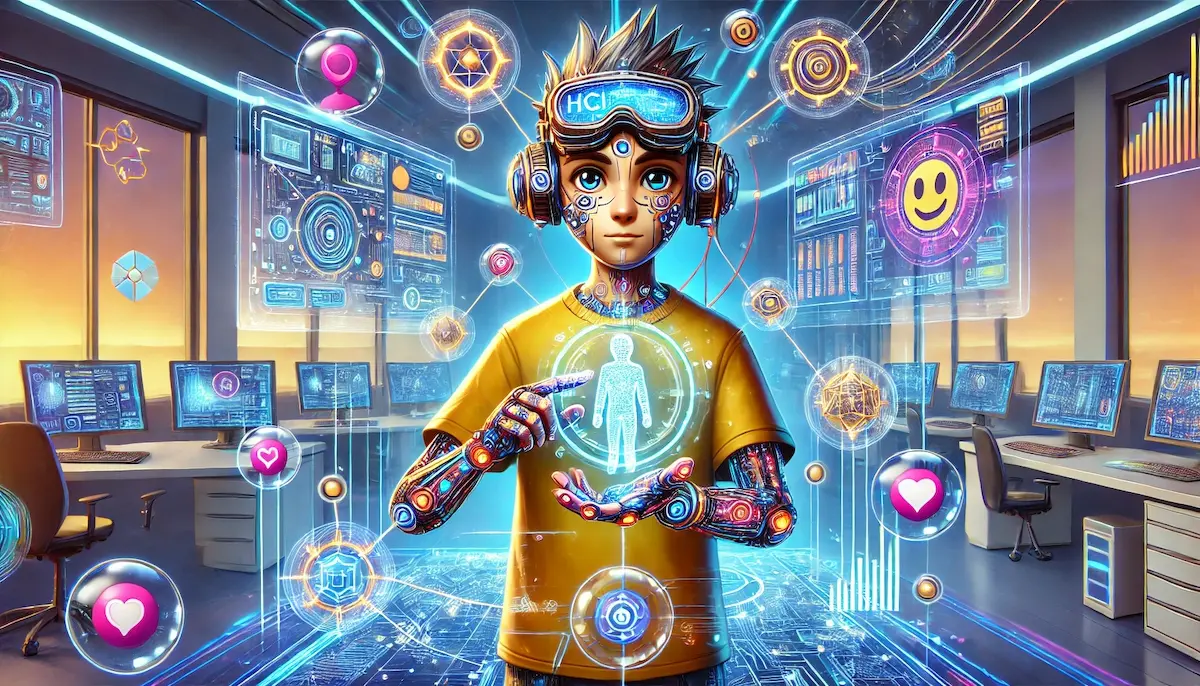Human-Computer Interaction (HCI) is a fascinating field that focuses on the design and use of computer technology, particularly the interfaces between people (users) and computers. Researchers in HCI observe how humans interact with computers and design technologies that let humans interact with computers in novel ways.
The Evolution of HCI
HCI has evolved significantly since its inception. In the early days of computing, interaction was limited to punch cards and simple command-line interfaces. With the advent of personal computing in the 1980s, graphical user interfaces (GUIs) became the norm, making computers more accessible to the general public.
Today, HCI encompasses a wide range of technologies and interfaces, including touchscreens, voice recognition, virtual reality (VR), and augmented reality (AR). Each advancement aims to make the interaction between humans and computers more seamless and intuitive.
Key Principles of HCI
Several key principles guide the field of HCI:
Usability
Usability is about making systems easy to use and learn. A usable interface is one where users can achieve their goals efficiently without frustration. Usability testing, where real users interact with the system to identify issues, is a critical part of the design process.
Accessibility
Accessibility ensures that systems are usable by people with various disabilities. This includes designing for screen readers, providing alternative input methods, and ensuring content is navigable by keyboard alone.
User-Centered Design
User-centered design (UCD) involves designing systems with the needs, preferences, and limitations of the end-users in mind. This approach often includes user research, personas, and iterative testing and refinement based on user feedback.
Aesthetics
While functionality is crucial, the visual appeal of an interface also plays a significant role. Aesthetic design can enhance user satisfaction and make the system more enjoyable to use.
Applications of HCI
HCI is applied in various domains, from everyday consumer products to complex professional tools.
Consumer Electronics
Smartphones, tablets, and computers are prime examples where HCI principles are applied to create user-friendly devices. Features like intuitive touch gestures, voice assistants, and personalized experiences stem from HCI research.
Virtual and Augmented Reality
HCI is crucial in the development of VR and AR technologies. Creating immersive environments that users can interact with naturally requires an in-depth understanding of human behavior and cognition.
Healthcare
In healthcare, HCI plays a vital role in designing systems that improve patient care and streamline the work of healthcare professionals. Examples include electronic health records (EHRs), telemedicine platforms, and medical devices with user-friendly interfaces.
Education
Educational technologies, such as online learning platforms and interactive tools, rely heavily on HCI to create engaging and effective learning experiences. Adaptive learning systems and gamified learning environments are examples of HCI in education.
The Future of HCI
The future of HCI is exciting, with emerging technologies like artificial intelligence (AI), machine learning, and the Internet of Things (IoT) promising to further transform human-computer interactions. These advancements will likely lead to even more intuitive, personalized, and immersive experiences.
Blockfine thanks you for reading and hopes you found this article helpful.
